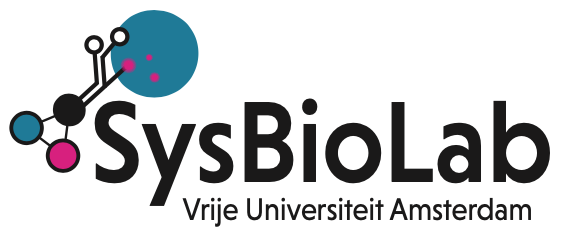After two years of online events, Pint of Science is back in your local pub! Pint22 will be hosting Science talks from May 9-11 and you will be able to enjoy mind-blowing scientific talks with a cold beer at your local bar in Amsterdam. The program of this year includes talks about laboratory meat, plant-based
Lab News
We recently published a new paper, https://febs.onlinelibrary.wiley.com/doi/10.1111/febs.16401. Below you find a short reflection on this paper. Microbial behaviour has been shaped by evolution. Our understanding is that the best adapted genetic variants are outcompeting the others — which explains their frequency increase and their selection. These fit variants generate novel genetic variants, which perform even
On March 11th we had a very exciting Internship Students Symposium! A total of 23 students from the MCB department presented the work that their are going to do in the lab in front of their peers and the staff. About 50 people joined the symposium and we had a very lively scientific discussion after
Adaptive changes of sediment microbial communities associated with cleanup of oil spills in Nigerian mangrove forests.
We are very excited with the news that Evelina and Johan were both awarded an early-career support grant by the recently formed A-life. These grants will allow both of them to appoint a PhD student and to further develop their research endeavors through new collaborations within A-life.
At the13th international symposium on lactic acid bacteria Eunice van Pelt – KleinJan, PhD student in Bas Teusink’s group, won the LABIP poster award for excellent research with industrial relevance. The poster “Proteome constraints shape Lactococcus lactis’ metabolic behaviour” shows that we can understand the changes and choices in energy metabolism that Lactococcus lactis (needed a.o. for Gouda cheese) makes,
Research article with Remco: Different Resource Allocation in a Bacillus subtilis Population Displaying Bimodal Motility. Collaboration between TNO, UvA and VU about resource allocation in Bacillus subtilis leads to new study published in Journal of Bacteriology this month (June 2021).
A key question in microbial ecology is what the driving forces behind the persistence of large biodiversity in natural environments are. We studied a microbial community with more than 100 different types of species which evolved in a 15-years old bioreactor with benzene as the main carbon and energy source and nitrate as the electron
Abstract Microbial community profiling using high-throughput sequencing relies in part on the preservation of the DNA and the effectiveness of the DNA extraction method. This study aimed at understanding to what extent these parameters affect the profiling. We obtained samples treated with and without a preservation solution. Also, we compared DNA extraction kits from Qiagen
Abstract Fine-tuning cellular physiology in response to intracellular and environmental cues requires precise temporal and spatial control of gene expression. High-resolution imaging technologies to detect mRNAs and their translation state have revealed that all living organisms localize mRNAs in subcellular compartments and create translation hotspots, enabling cells to tune gene expression locally. Therefore, mRNA localization
Lab news
- Summer school “Economic Principles in Cell Biology”
- How genetic circuits can optimally tune metabolic protein concentrations
- Our take on the practical aspects of genome-scale modeling
- Our research featured in Quanta Magazine
- Herwig to lead €5M NWO Perspective Grant Consortium for plant-based fermentations
Recent Posts
- Summer school “Economic Principles in Cell Biology”
- How genetic circuits can optimally tune metabolic protein concentrations
- Our take on the practical aspects of genome-scale modeling
- Our research featured in Quanta Magazine
- Herwig to lead €5M NWO Perspective Grant Consortium for plant-based fermentations
Archives
- July 2024
- April 2024
- February 2024
- January 2024
- November 2023
- September 2023
- August 2023
- July 2023
- June 2023
- May 2023
- April 2023
- March 2023
- February 2023
- December 2022
- November 2022
- May 2022
- April 2022
- March 2022
- February 2022
- September 2021
- May 2021
- April 2021
- December 2020
- October 2020
- September 2020
- May 2020
- February 2020
- December 2019
- November 2019
- September 2019
- August 2019
- July 2019
- June 2019
- May 2019
- April 2019
- February 2019
- November 2018
- October 2018
- June 2018
- May 2018
- March 2018
- February 2018
- January 2018
- November 2017
- October 2017
- August 2017
- July 2017
- June 2017
- May 2017
- April 2017
- March 2017
- January 2017
- December 2016
- September 2016
- August 2016
- July 2016
- June 2016
- May 2016
- April 2016
- March 2016
- February 2016
- January 2016
- December 2015
- November 2015
- September 2015
- July 2015
- April 2015

Recent Comments